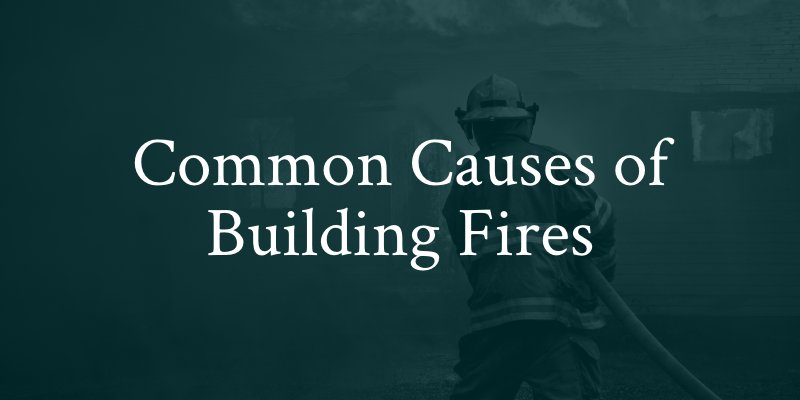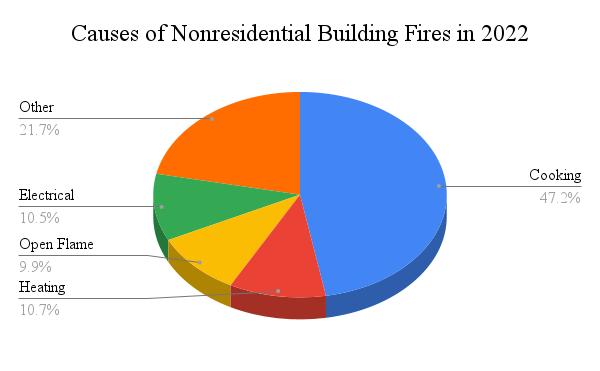Common Causes of Building Fires and How to Prevent Them
Building fires are much more common than most people realize. This includes fires that occur inside of residential homes as well as commercial structure fires. Here, we want to examine some recent house fire and nonresidential fire statistics. We also want to look at some of the most common causes of building fires.
When you are prepared with information, you could take various preventative steps to prevent fire from destroying your business or home. We want this information to prevent burn injuries and property damage.
Table of Contents
- Common Causes of House Fires and Nonresidential Fires
- House Fire Statistics
- Nonresidential Building Fire Statistics
- Fire Prevention Tips
- What Should I Do If I’ve Suffered Injury From a Building Fire?
What Are the Most Common Causes of Commercial Building and House Fires?
According to data available from the National Fire Protection Association (NFPA), we can see that local fire departments responded to around 1.5 million fires in 2022. Unfortunately, these fires lead to around 3,790 civilian deaths and more than 13,250 civilian injuries. There was an estimated $18 billion worth of property damage as a result of fires during that same reporting year.
Fires can occur for a wide variety of reasons in both residential settings and commercial settings. Some of the most common causes of these fires include the following:
Cooking Equipment
Whether in the home, at a restaurant, or another type of building, kitchens use high temperatures, flammable oils and grease, and a variety of types of equipment. If proper safety procedures are not followed when cooking, house fires can originate from the kitchen area and spread to other areas of a building very rapidly.
Heating Equipment
Depending on the time of year and climate, heating equipment and appliances inside homes and commercial buildings can lead to major fires. This can include issues with furnaces, boilers, radiators, and space heaters.
Electrical and Lighting Equipment
Most electrical and lighting wires run behind the walls inside homes and commercial buildings. However, anywhere there is electricity, there is an inherent fire risk. Old or defective wiring, loose connections, faulty fuses, overloaded circuits, imbalanced electrical loads, and other electrical issues can lead to a spark that ignites a fire.
Open Flames
Another major cause of fires in buildings is open flames from candles, matches, lighters, and outdoor grills. Even a small, seemingly insignificant blaze can catch onto nearby flammable resources and turn into a disaster. Leaving open flames unattended or close to combustibles further increases the risk.
Intentional Fires
Unfortunately, there are times when individuals maliciously set fires. Arsonists can affect private homes as well as commercial establishments.
According to the National Fire Protection Association, fire departments respond to a fire somewhere in this country every 21 seconds. Every fire must be thoroughly investigated to determine what happened. In some cases, victims may be entitled to significant compensation for injuries or property damage losses.
Statistics on Home and Nonresidential Building Fires
To better visualize the causes of both nonresidential and residential building fires, we have used national fire estimates from the US Fire Administration to create tables and graphs illustrating the frequency and impact of fire causes over a ten-year period.
House Fire Statistics
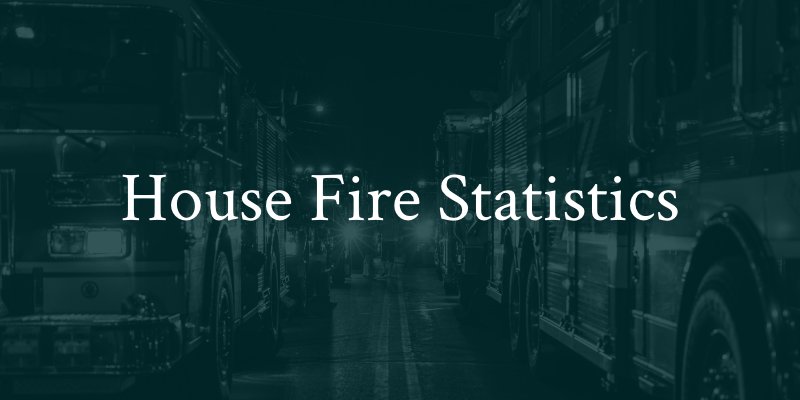
The data for residential building fires (house fires) from 2013 to 2022 is shown below:
| Year | Cooking | Heating | Electrical malfunction |
|---|---|---|---|
| 2013 | 188,000 | 49,000 | 23,100 |
| 2014 | 189,800 | 47,600 | 23,900 |
| 2015 | 193,400 | 41,200 | 24,500 |
| 2016 | 183,300 | 35,100 | 23,500 |
| 2017 | 191,800 | 33,800 | 24,100 |
| 2018 | 192,700 | 35,700 | 25,700 |
| 2019 | 178,100 | 33,100 | 24,200 |
| 2020 | 192,600 | 33,000 | 23,400 |
| 2021 | 170,000 | 32,200 | 24,200 |
| 2022 | 178,600 | 34,800 | 26,100 |
The following chart illustrates the leading causes of house fires in 2022, highlighting the areas where homeowners should be most vigilant.
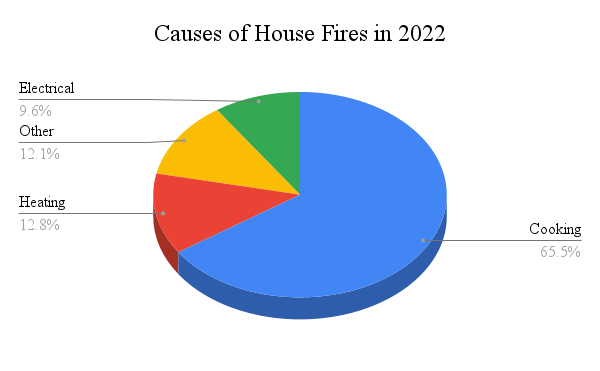
It’s also important to consider the broader house fire data when identifying risks. This chart illustrates the leading causes of fires from 2013 to 2022.
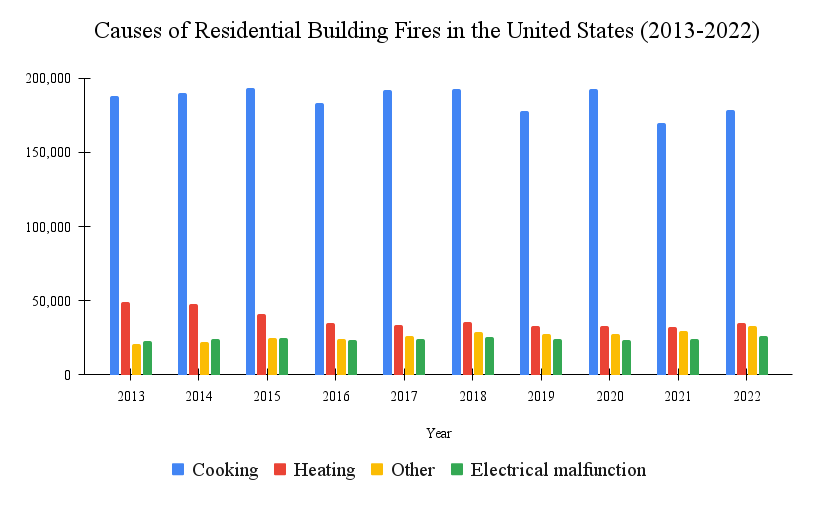
House Fire Trends Between 2013-2022:
- Cooking was the leading cause of home fires by far for all ten years, but there has been a 7% decrease in cooking fires overall.
- Similarly, heating fires declined by 34%.
- Accidental fires saw a 49% increase, however, and electrical fires increased by 6%.
Nonresidential Building Fire Statistics
Nonresidential buildings, such as businesses and schools, face different fire risks than homes. The data for nonresidential building fires from 2013 to 2022 is shown below:
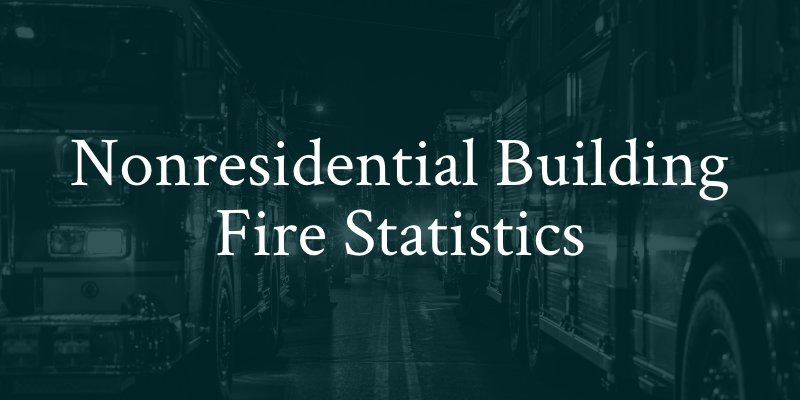
| Year | Cooking | Heating | Electrical Malfunction | Open flame |
|---|---|---|---|---|
| 2013 | 27,400 | 8,400 | 7,400 | 5,700 |
| 2014 | 29,000 | 9,000 | 8,000 | 6,000 |
| 2015 | 30,900 | 7,900 | 8,200 | 6,500 |
| 2016 | 28,900 | 7,100 | 7,100 | 5,700 |
| 2017 | 33,700 | 7,600 | 8,200 | 6,700 |
| 2018 | 31,700 | 7,100 | 8,100 | 5,900 |
| 2019 | 33,200 | 7,400 | 8,200 | 6,500 |
| 2020 | 28,600 | 6,400 | 6,800 | 6,200 |
| 2021 | 31,100 | 7,100 | 7,200 | 7,100 |
| 2022 | 35,800 | 8,100 | 8,000 | 7,500 |
Here, we can see a breakdown of the top causes of nonresidential building fires in 2022.
Fire Trends in Nonresidential Buildings Between 2013-2022:
- Cooking was also the leading cause of fires in nonresidential buildings, with a 17% increase in cooking fires.
- Intentional fires had a sharp 140% increase over the past decade.
- On the other hand, there was a 68% increase in unintentional or careless fires.
This underscores the need for business owners to use strong security measures and enhanced safety training to protect their property.
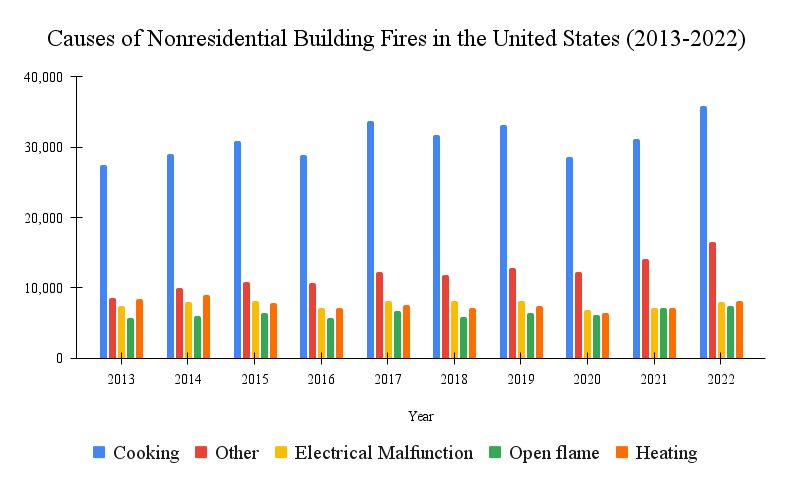
Prevention is the best defense against commercial building and house fires. Consider the following safety tips for different scenarios:
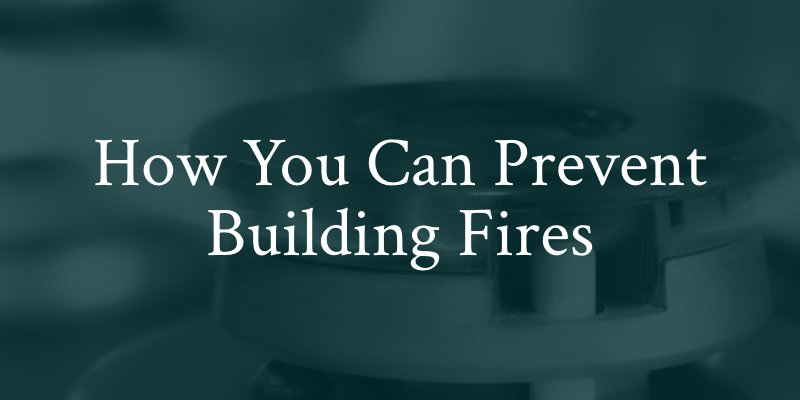
House Fire and Building Fire Prevention Tips
Cooking Equipment
Avoid leaving the kitchen unattended while cooking. Keep flammables outside the stove. Always keep a fire extinguisher close to hand in case of emergency.
Heating Equipment
Check and service heating equipment. Space heaters should not be near anything flammable, and heating devices should not be left unattended.
Electrical and Lighting Equipment
Check electrical equipment regularly. Do not overload circuits. If you see flickering lights or smell a burning odor, inspect it at once.
Open Flames
Avoid leaving candles or any open fires unattended. Always extinguish cigarettes or other smoking materials before you leave. Any open flame should be kept away from flammable materials like paper, fabric, and curtains. Candle holders should be used to prevent candles from tipping over.
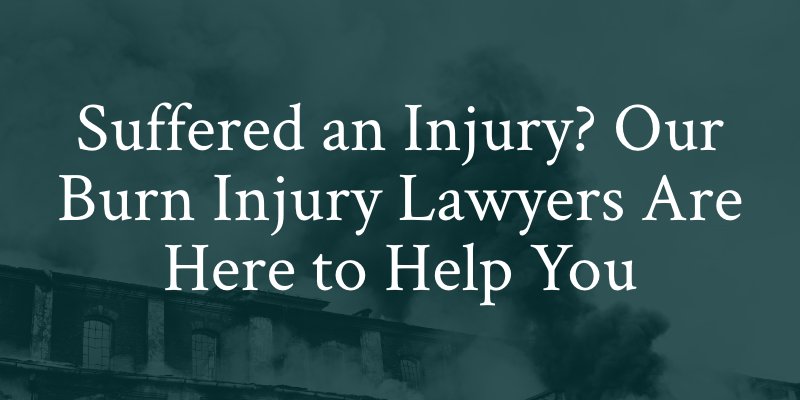
What Should I Do If I’ve Suffered Injury From a Building Fire?
If you or somebody you care about has been injured or sustained property damage in a building or home fire, you may be entitled to compensation if the careless or negligent actions of a property owner led to the fire starting in the first place. A skilled personal injury lawyer in Louisville will be able to conduct a complete investigation into the incident in order to determine what happened. An attorney will negotiate vigorously with insurance carriers and at-fault parties to ensure that you are properly cared for and that you receive the compensation you are entitled to.
